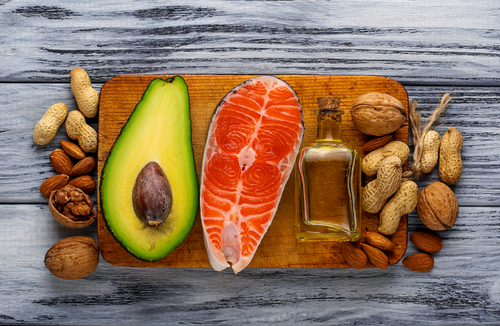November 10, 2017
Curious about Keto?
I was recently inspired to try a different way of eating after visiting a new naturopath. Her and I spoke at great length about how reducing caloric intake and specifically reducing carbohydrate intake was very beneficial to the body. What we were really discussing, without me knowing it at the time was the Ketogenic diet, Keto for short. Up until that point I had only heard a few things here and there about the Keto diet but never really paid much attention to them. I was quite happy with my 3 meals a day, focusing on a balance of macronutrients; proteins, carbs, and fats thinking I was doing the best thing for my body. However, the more I learned about Keto, the more I realized that those carbs were not the best choice for me.
So, I did my homework and I dug deeper into the Keto diet and uncovered some very useful tips and benefits that the Keto diet offers. I’d like to share those with you and always remember, no diet or eating plan is right for everyone and you should always consult the advice of a healthcare professional before jumping into anything.
What is the Ketogenic Diet?
Currently, the SAD (Standard American Diet) provides the average person with more carbohydrates and more sugar than most people can handle. This has led to a huge spike in obesity as well as illness and disease. We have been told that carbs are a source of energy for the body, which is true, however in this day and age they have become the primary source of energy which has led to overconsumption and plenty of extra storage in the form of fat on the body. Carbs and sugar cause spikes in insulin levels and can eventually lead to insulin resistance as well as inflammation in the body.
In comes Keto where the primary goal of the diet is to improve metabolic health by converting the primary cellular fuel source from carbohydrate-based fuels(glucose) to fat fuels and the fat metabolism products known as ketones. Ketones are water soluble high energy substrates that form from fatty acid oxidation. For so long we have heard that fats will make you fat or they are not good for you and can cause all sorts of health issues. Only just recently have good fats started to get a good rap and for all the right reasons too.
The human body is unique in that it has the ability to burn fat and ketones to produce energy instead of relying on sugars and carbs. Our bodies have adapted to do this to protect us in times when food is scarce. In fact, the keto diet relies primarily on healthy fats and very little on carbs and protein. A typical macronutrient breakdown for the Keto diet looks like this: 70-75% fat, 20-25% protein, and 5-10% carbs. What this will allow the body to do is transition from using carbs as the main source of energy to using fat as the main source. This occurs in a transitional period known as keto-adaptation which takes several weeks to achieve.
Benefits of the Ketogenic Diet
The long list of benefits is what really intrigued me about this lifestyle. The research is rolling in about the short and long-term benefits of eating this way from weight loss to cancer treatment.
On a cellular level, the ketogenic diet increases the amount of ketones in the blood which improves the function of cellular energy pathways as well as mitochondrial health. Overall, it can lead to better health and wellbeing. As a result of this improved cellular function in the body, many noticeable benefits arise like:
- Reduced food cravings and constantly feeling hungry. Ketone bodies are a natural appetite suppressant and the fat being consumed is very satisfying.
- Weight loss.
- Lowered blood pressure
- More energy
- Reduced stiffness and joint pain
- Mental clarity
- Sustained and stable energy throughout the day, no more afternoon crashes
There will definitely be some initial side effects when converting the the Keto diet as with any major shift in life. The most difficult time is the first week or so when the body is getting used to using fat for energy instead of carbs which it has probably been doing most of it’s life. During this transition stage one can expect to have a lack of energy, a slight lack of mental clarity and possibly some stomach upset as the body gets used to it’s new high fat diet. However, if you can overcome these first few days of feeling a bit crummy, there is most definitely a light at the end of the tunnel and you will begin to feel better than you have ever felt in your life!
Getting Started with Keto
The best thing you can do is clear out all the unhealthy sources of carbs in your kitchen and pantry. Think breads, pastas, cereals, sugar and just about anything processed like cookies, cakes, and crackers. Truthfully, when you look at that list those are highly processed foods that we shouldn’t be eating to begin with.
The next thing is to stock up on healthy sources of fat such as coconut oil, ghee, grassfed butter, avocado oil, olive oil, nuts, seeds, olives, and avocados.
From here some staples in the diet are eggs, fish, poultry, beef and pork as well as low carb veggies such as leafy greens, broccoli, asparagus, cauliflower, and Brussels sprouts. There are countless websites dedicated to the Keto diet and many have meal plans as well as recipes to help get you going with this healthy new venture. I have found www.ketogenic-diet-resource.com to be very helpful as well as www.atkins.com and www.theketogenicdiet.org for some great recipes.

Be well.



